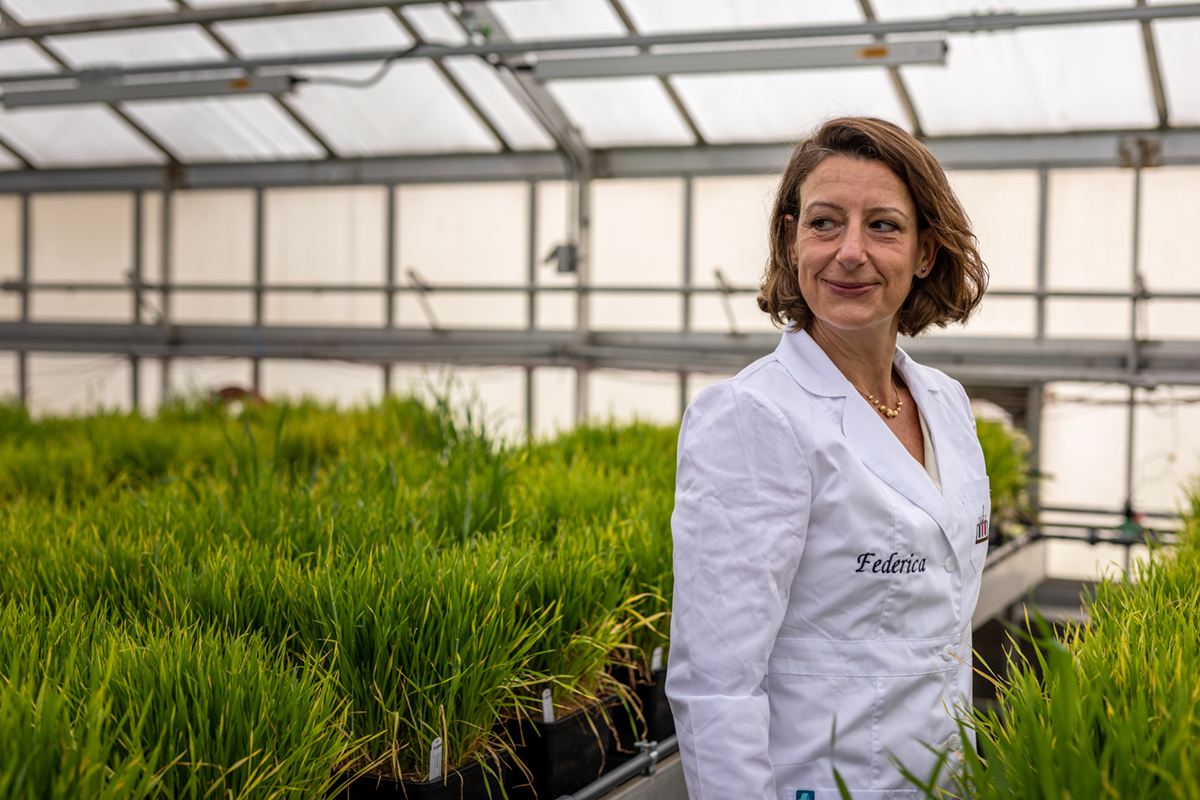Uncovering protein complex between ER and chloroplasts
Article Highlights
- Researchers have discovered what bridges two important pieces of cellular machinery in plants, opening a new avenue in plant research.
- VAP27-1, VAP27-3 and ORP2A proteins completed the picture of a unique complex that exists between the endoplasmic reticulum and the chloroplasts.
- This research was published in Nature Communications.

By Luciana Renna
Researchers have discovered what bridges two important pieces of cellular machinery in plants, opening a new avenue in plant research.
In a recent study in Nature Communications, researchers from the Michigan State University-Department of Energy Plant Research Laboratory, or PRL, looked at the interactions that occur between two key organelles in plant cells, the endoplasmic reticulum, or ER, and chloroplasts.
“A functional interaction between them was known for a long time, but protein complexes bridging the two organelles were not known,” said Federica Brandizzi, MSU Distinguished Professor and Research Foundation Professor in the PRL and Department of Plant Biology. “Our findings mark a significant milestone in plant cell biology and open new areas of investigations with tools to define the identity of other elements of the machinery at ER-membrane contact sites with chloroplasts.”

Within plant cells are structures called organelles, which serve specific functions for the plant. Researchers knew the ER and chloroplasts are close to one another.
“We were interested in understanding if this physical connection exists between [them], and if they existed, how they are established, how they are maintained and what function they serve,” said Luciana Renna, first author on the study and former postdoc in the Brandizzi lab. L. Renna is currently a researcher at the University of Florence.
The study led to the identification of two proteins, VAP27-1 and VAP27-3. When these proteins were localized in plant cells, L. Renna found they would accumulate at the ER and at ER regions interfacing with chloroplasts. This was unusual behavior for these types of proteins, and it signaled they could be the bridge between the two organelles.
“We started thinking that these two proteins were probably doing something specific over there,” L. Renna explained. “We started many experiments to understand if the localization of this protein was functional.”
Alongside the VAP27 proteins, the ORP2A protein completed the picture of a unique complex that exists between the organelles. This is the first step in understanding the molecular machinery that instructs their interactions.

Credit: MSU
“This is the first complex that is identified to be important at this interface, and it has a functional role of keeping the lipid homeostasis between these two organelles,” L. Renna said. “When any of these proteins are missing, the lipid composition and the inner membrane organization of the chloroplasts is affected.”
“This work advances our research by opening new avenues to study how the ER functionally and physically interacts with non-secretory organelles,” Brandizzi said.
This work was funded primarily by the Chemical Sciences, Geosciences and Biosciences Division, Office of Basic Energy Sciences, Office of Science, US Department of Energy (award number DE-FG02-91ER20021) with contributing support from the Great Lakes Bioenergy Research Center, AgBioResearch and a fellowship from Michigan State University under the Training Program in Plant Biotechnology for Health and Sustainability.



